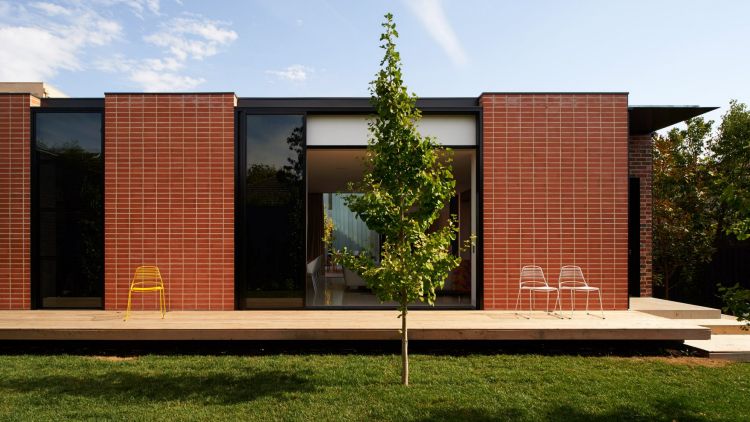From Seidler to Murcutt, these homes are instantly recognisable.
Architecture, just as with decorating trends, has its ‘moment in the sun’. But unlike the choice of colours used in one’s home, that can be easily changed, structural walls can’t be altered from one year to the next. And as the consumer gets smarter, architectural ‘gimmicks’ are passed over in favour of design that has a sense of longevity.
“There’s greater design awareness on all fronts. People question a lot more rather than just getting on board with the latest trend,” says architect Andrew Piva, director of b.e. Architecture.
According to Piva, one of the greatest trends that enticed people through 2016 was adopting elements from the commercial realm into their homes. “The point is, we don’t live in a café or a restaurant. The design for that interior is often a singular one in keeping with a certain theme. It creates a sense of drama for the few hours you are seated around the table,” says Piva.
 Three Parts House by Architects EAT. Photo: Earl Carter
Three Parts House by Architects EAT. Photo: Earl Carter
A similar approach is often applied to retail fit-outs where the purpose is to sell various products and/or to create a branding effect for the goods on offer. “You’ll find that in these environments the ‘volume is turned up’ to make that statement. ‘More is more’ often becomes the mantra,” he adds.
Piva often finds that clients attend meetings with images of details found in cafes, restaurants, bars and other hospitality venues. A beautiful brass detail framing a bar is then requested for an island bench in the client’s new kitchen. “These details can sometimes be included in a certain domestic design, but they shouldn’t be overwhelming, with the detail becoming lost,” says Piva, who sees a stronger presence of primary finishes going forward to the new year. “I think we’ll see a palette of simpler materials appearing in 2017, used with honesty, rather than trying to trick these up with different finishes to make them appear more than they are,” he says.
This year, as well as for the last few years, there has, according to Piva, been far too much attention given to detail, such as ‘choosing the latest black tapware or the right door knob’.
 Three Parts House by Architects EAT. Photo: Earl Carter
Three Parts House by Architects EAT. Photo: Earl Carter
While such pontification is not necessarily a bad thing, honing in on detail, rather than looking at the bigger architectural picture, can be a mistake. “If 2016 was looking at, and being preoccupied with the finer detail, 2017 will be about moving towards how the spaces feel, as much as how they look,” says Piva.
One 2016 design feature that Piva would like to see ‘buried’ in 2017, is the indoor plants that dotted both commercial and residential interiors. “People admire ‘green walls’ in cafes and offices and want to have one in their own home,” says Piva. “The trouble is a green wall or a potted plant that isn’t looked after can become an eyesore,” he adds.
Architect Albert Mo, director of Architects EAT, also predicts a focus on brick in 2017. For the last few years, bricks have made a strong return, whether used inside and left exposed, or as breeze blocks framing a veranda or outdoor terrace. “Bricks will gain momentum and there will be new ways of working with bricks in the years ahead,” says Mo, who sees them as not only being tactile, but also evoking memories of brick homes from the past.
 Three Parts House by Architects EAT. Photo: James Coombe
Three Parts House by Architects EAT. Photo: James Coombe
While bricks became a highlight in 2016, and are expected to gain momentum in 2017, Mo also sees a resurgence in the use of off-formed concrete, as championed by the late architect Harry Seidler.
Mo is currently working on two insitu concrete homes for clients, with both walls and roofs formed in concrete poured on site. “Concrete is evocative of some of the modernist post-war homes from the 1960s and ’70s. It really changes the atmosphere of a house, making it feel quite special,” says Mo. But other architectural facets, such as porthole windows, will hopefully fade from Mo’s mind in 2017.
“These windows have their place and are often hugely successful with children, who like to interact with them. But in their basic use, they just appear as primary shapes punched into a facade,” says Mo, who would prefer to look at 2017 through a generous floor-to-ceiling glass window in one’s living room.


